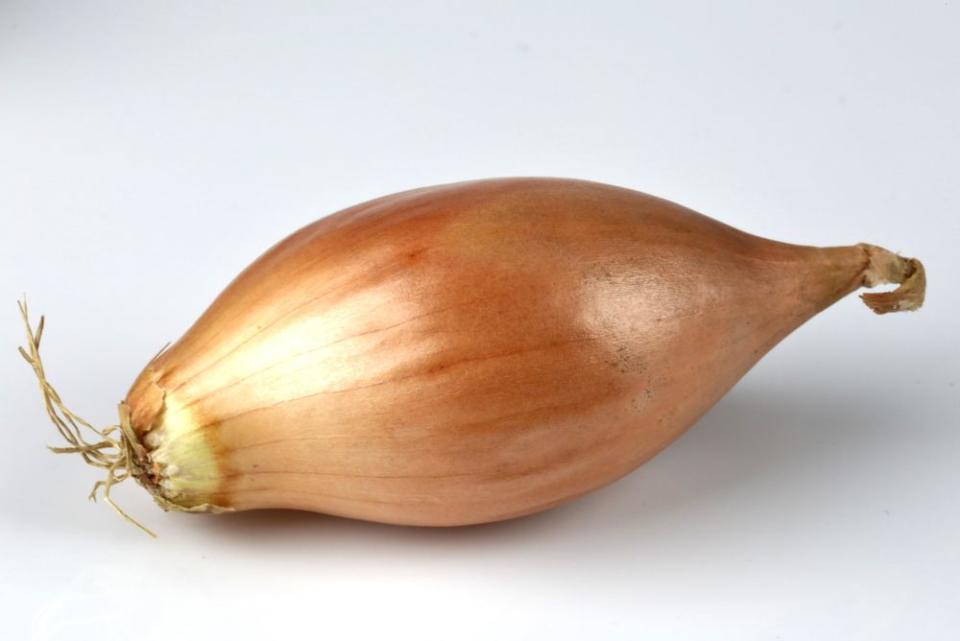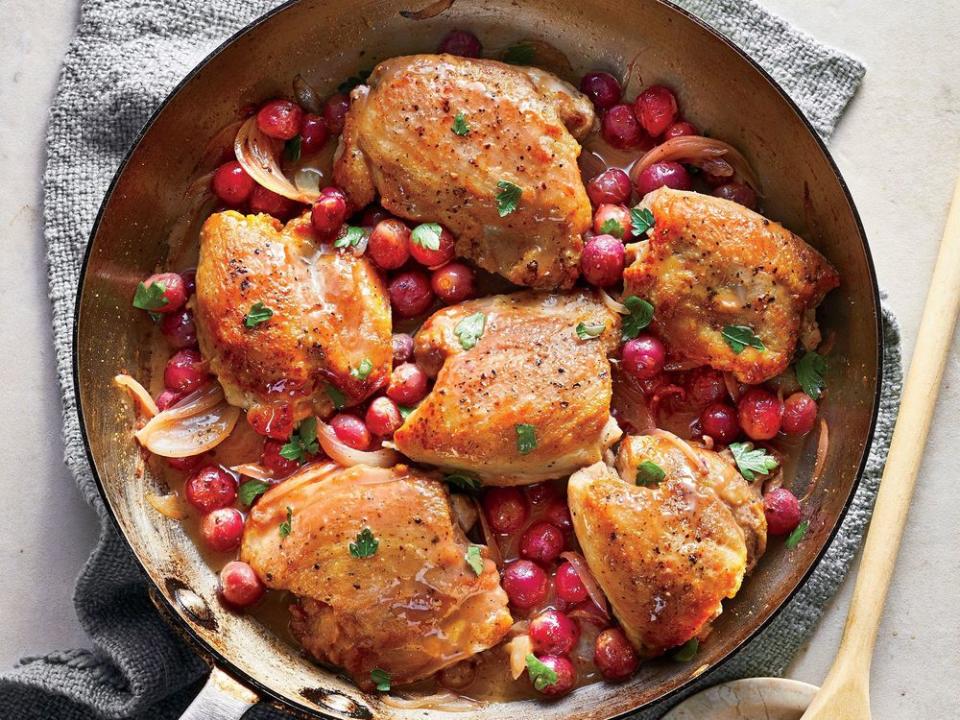What Is a Shallot—and What's a Good Substitute?

If you’ve ever found yourself reading a recipe and wondering, “What the heck is a shallot?!” you’ve come to the right place. Here’s what the vegetable is (and isn’t):
What Is a Shallot?
A shallot is a bulb vegetable in the allium family. Its name comes from Ashkelon, an ancient city on the coast of Israel, where people used to believe shallots were first cultivated. However, it’s more likely that the shallot originated in Central or Southwest Asia.
The vegetable goes by quite a few names: Some people in Quebec and England stress the second syllable of the word ("shall-OH"), while some French speakers call the vegetable “eschalot.”
To make things more confusing, the word “shallot” is also used to describe a scallion in parts of Australia.
Shallots look a lot like small onions. They can vary in color from golden brown to red. Their flesh is generally off-white and tinged with green or pink.
Related: What Are Leeks and What Do They Taste Like?
What Does a Shallot Taste Like?
Shallots are related to garlic and onions, so their strong and pungent flavor shouldn’t come as a shock. However, they are milder and sweeter than their intense relatives. Shallots are made even milder and sweeter by cooking.
Shallots vs. Onions
WATCH: What's the Difference Between a Shallot and an Onion?
Onions and shallots clearly have a lot in common, but they’re far from the same thing. Our very own Stacey Ballis explained the difference in detail for us a few years ago:
“While they are related, shallots differ from onions in some basic ways. First of all, unlike regular onions, which grow as single bulbs, shallots grow in clusters, more like garlic. They are a bit sweeter than regular onions, and their flavor is more subtle. This makes them especially good as a seasoning in raw applications like vinaigrettes or salads, where they add onion-y flavor without too much punch, or in slow roasted or braised dishes, where their sweetness can really enhance a dish without watering it down.”
Read more about the difference between shallots and onions here.
Shallot Substitute
Surprise, surprise: Even though they’re different vegetables with (slightly) different culinary purposes, onions and shallots can be used interchangeably—with a few caveats.
Substitution works best when the recipe calls for cooked onions or cooked shallots. When raw, onions may be too harsh to trade for shallots.
Since shallots are smaller, you’ll need to use more when swapping for onions. For instance, one small onion is roughly the same size as three small shallots.
If possible, opt for yellow onions when substituting. Sweet onions are too sweet, while white and red are too intense.
How to Cut Shallots

If you can mince an onion, you can mince a shallot. All you have to do is remove the vegetable’s papery skin, then cut into thin slices from root to tip (remember to hold the shallot steady to keep its shape).
Finally, turn the shallot and then cut thin slices in the other direction. The closer these cuts are to one another, the finer your pieces will be.
Shallot Recipes

Ready to try your hand at cooking with shallots? Here are some of our favorite recipes that allow the flavorful veggie to take center stage:

